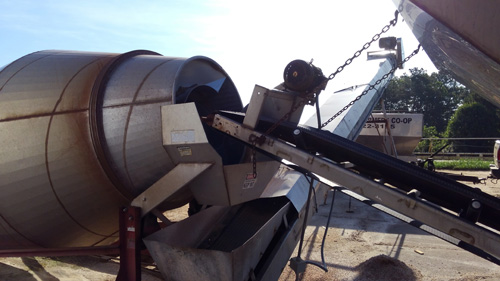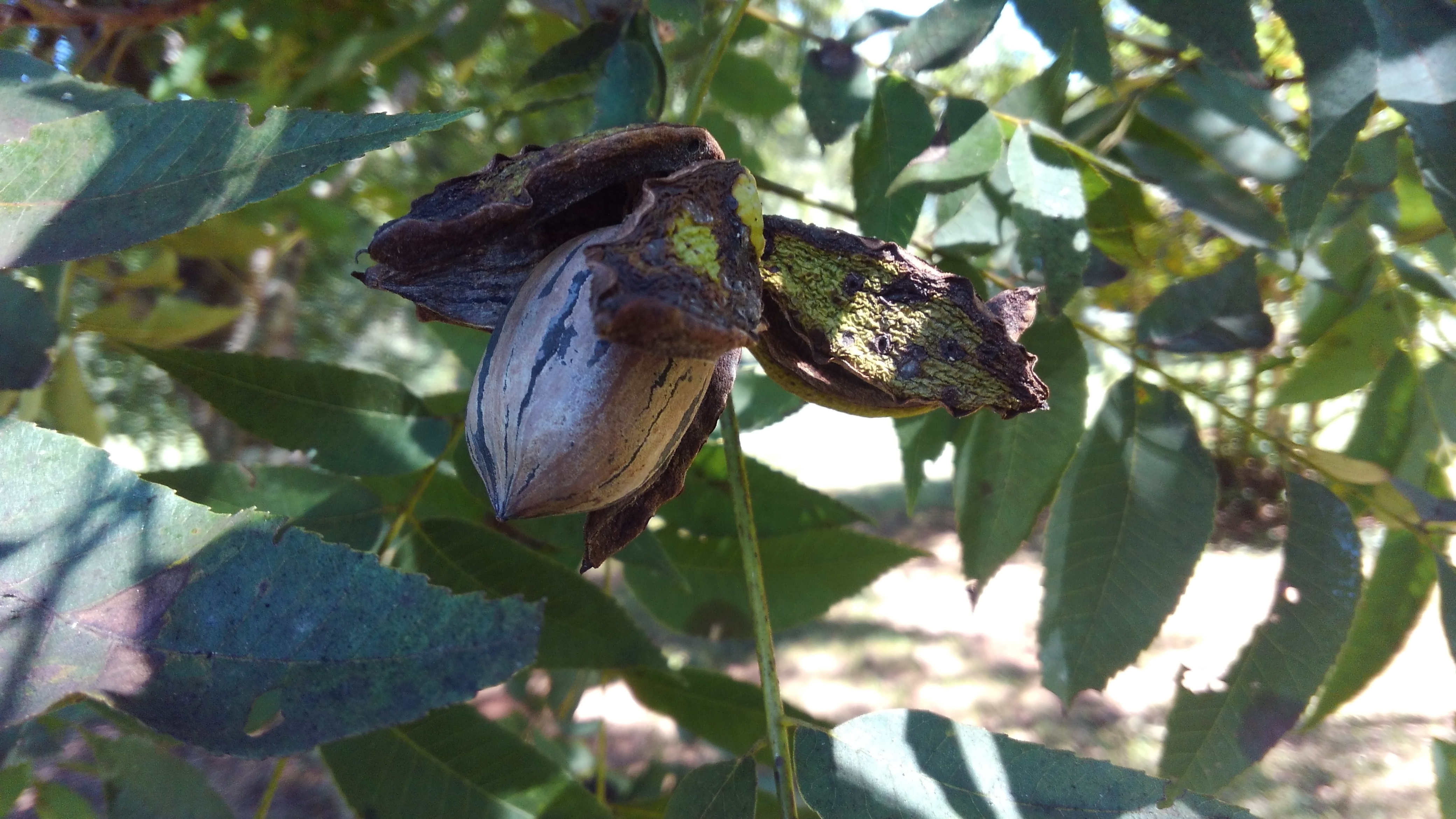
Learn How Pecans are Grown and Harvested
Flying Basset Farm

Fertilizing the Trees
Early in the spring we fertilize our trees with a custom blend of fertilizers with a formulation based on soil and leaf samples.
We distribute the fertilizer in concentrated bands about half way between the tree trunks and the edge of the canopy so
the tree roots benefits instead of grass and weeds.

Blending the Fertilizer
Our local farmers co-op custom blends our fertilizer to meet the recipe the laboratory gives us from soil and leaf samples

Fertilizer Buggy
We use a modified spreader-buggy that distributes fertilizer in a narrow concentrated band instead of broadcasting over a wide area

Newly Planted Trees
In late fall of 2018, while the trees were dormant we planted new trees at locations where trees were missing. We tightened up our
orchard from 100 foot row centers to 50 foot row centers. It will be 5 to 8 years before we see any pecans on the new trees.

Pruning Trees
In the late winter while the trees are still dormant we prune them to allow sunlight and air to penetrate the canopy which promotes growth and reduces disease

Catkins
Early spring brings what we call bud-break when leaves start to bud out and the trees start to flower. Pecan male flowers are called catkins. The male catkins look like fuzzy
green strings hanging in the trees. The pollen is released as a
green dust is carried by the wind and you see all over everything in the spring. The female flower on the same tree shown between the catkins blooms on a different
schedule which requires multiple varieties of trees that
have compatible bloming schedules. Pecans develop from the pollinated female flower.

Early Pecan Development
Early summer pecans start to develop. Most trees produce a cluster of three pecans.

Water Stage
When you cut open a pecan early in development is is full of water. The nut meat will develop from the shell towards the middle.

Developing Pecan
As the pecan develops the nut meat inside starts to look like a pecan. The husk and shell are fully developed and the nut meat
is developing toward the center. At this point it does not taste anything like a pecan.

Shuck Split
This is when it is time to harvest the pecans. When the shucks split exposing the pecan, the meat has fully developed and the nut tastes like a pecan.
Left alone, the pecan will eventually fall to the ground but this is also an opportunity for squirrels and crows to make a feast of the bounty.
Tree Shaking
When the pecans are ready to harvest we shake the tree and they all come raining down.

Picking Up the Pecans
We run our harvester after shaking the trees to pick up the pecans. The harvester will separate and
expel leaves and sticks and put the pecans into a hopper located on the harvester.
Loading Gravity Feed Buggy
When the hopper on the pecan harvester is full, the pecans are emptied into a gravity feed buggy where they are temporarily stored until they can be run through the pecan cleaner
Cleaning the Pecans
Pecans are run through the cleaner where light weight nuts that are not
fully developed or empty are blown out. The good pecans make their way to the inspection belt where they are visually
examed and poor quality nuts and debris are removed

Super-Sack for Wholesale
The cleaned pecans that we sell to a wholeseller are loaded into super-sacks which hold between 1200 to 1500 pounds
of pecans each. We use pallet forks to load these on our truck and take them to the buyers.
Harvesting Our Pecans.
This 5 minute video shows the entire process of harvesting our pecans
Cracking and Shelling.
We use a large contract facility to crack and shell a portion of our pecans to make our candy and pecan treats

Cracking and Shelling on the farm.
This is the machine we use to snell pecans that customers bring us

On Farm Commercial Kitchen
We use our own pecans to create our candy and snacks. Our kitchen is inspected by the
State Department of Health and all personnel have current food safety certifications.